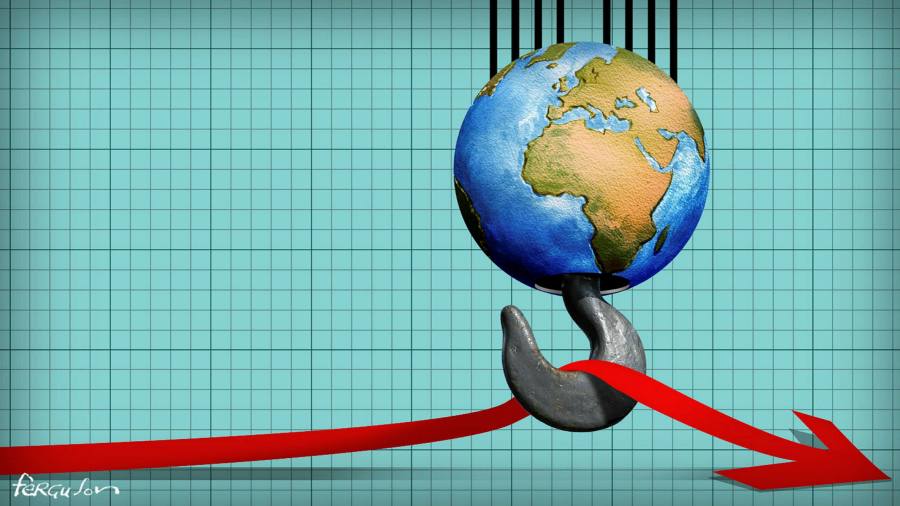[ad_1]
The recovery from the shock of the pandemic is here. It is driven, above all, by the arrival of vaccines, but also by an improvement in our ability to combine economic activity with social distancing, and huge fiscal and monetary support — especially from the US. Yet it is vital not to forget the perils we still face and the lessons we must still learn. Nothing can teach the reality of global interdependence better than a pandemic. But is this what we learnt? In our fear, we have turned inwards more than outwards.
Nevertheless, the news on the recovery is good. The OECD’s recently issued interim Economic Outlook shows a clear improvement in growth prospects for 2021 and 2022. Global output is forecast to be 2.5 per cent higher in the last quarter of 2022 than was expected as recently as last December. The single most important reason for this, after the miracle of the vaccines, is the US’s $1.9tn fiscal support package. This is forecast to raise US gross domestic product by 3.8 percentage points in its first full year. Its effects are also forecast to spill over to the rest of the world, raising eurozone GDP by 0.5 percentage points to take one example.
Yet there remain challenges and risks.

First, the US is undertaking a remarkably bold fiscal and monetary experiment. The Biden administration is already talking of a further $3tn spending package on infrastructure, clean energy and education. Together, these packages amount to nearly a quarter of US GDP. As the chances of a large tax increase are small, much of this will be financed by the Federal Reserve.
Lawrence Summers, former US treasury secretary, declares that: “These are the least responsible fiscal-macroeconomic policy we’ve have had for the last 40 years.†They are, at least, the most daring. This administration wants to avoid the mistakes of the Obama era. But it could make opposite ones. The desire to take these risks is understandable. Yet if the stimulus proves excessive, damage may be severe.

Second, the vaccine rollout is uneven and, relative to the challenges, too slow. So far, just under 6 doses have been given per 100 people worldwide. Among large countries, this rate goes from 45 in the UK and 38 in the US, to 13 in the EU, six in Brazil, three in India and near zero in Nigeria. If we assume global herd immunity requires two doses of vaccine for 75 per cent of the world’s 6bn adults, some 9bn doses need to be delivered. As only about 450m have been delivered so far, the chances of 9bn jabs being administered by the end of 2022 look small. At the same time, if the virus remains rife, the risk of dangerous variants emerging is high. Clearly, we must co-operate on increasing supply and delivery of doses worldwide.
Third, the pandemic has had dramatically different effects across countries. The OECD now forecasts that the US economy will be slightly bigger in the fourth quarter of this year than it expected in November 2019. The Indian economy, in contrast, is forecast to be 8 per cent smaller. Particularly sobering is the rise in the number of people in extreme poverty, now estimated by the World Bank at between 119m and 124m.

Fourth, the pandemic has affected people very differently within each country. The victims of its social and economic costs have mainly been children and young adults, people who cannot easily work from home, generally the less skilled, women (especially mothers of young children) and ethnic minorities. Meanwhile, skilled professionals and capitalists have done well. These scars are deep and need healing.
Fifth, the pandemic has accelerated changes in patterns of work and residence. New possibilities have opened up for those able to work remotely. But the consequences for others will be difficult.

Finally, the pandemic has accelerated the ongoing breakdown in relations between the US and China. Hostility to China seems to be almost the only thing on which the Trump and Biden administrations agree. Maybe this was bound to follow China’s rise. It is also dangerous.
As we look at these challenges and risks, we need to reflect on something remarkable that we have also learnt.

So far, Covid-19 is estimated to have killed 2.7m people worldwide over about 15 months. Nobody knows how many died from the Spanish flu a century ago. But estimates are that the number of fatalities was between 17m and 100m, in less than two years, out of a global population less than a quarter of today’s. So, deaths thus far are at most 4 per cent of those from the Spanish flu.
Many are now able to protect themselves while continuing to work, in ways impossible a century ago. High-income countries are able to cushion those who lost their jobs when their economies are partially closed down. Not least, we have been able to develop vaccines at astonishing speed. All these are indications of progress that we take too readily for granted. Our civilisation treasures life. We are right to do so. Above all, we are able to do so.

Yet we limit our success by our difficulties in co-operating, even when vital interests are threatened. The pandemic and the bigger challenge of climate change show us how much we depend on working together successfully on shared challenges. But the reality remains one of deep division, and the suspicions that inevitably follow.
The pandemic will not be over until it is over everywhere. We must co-operate to achieve that outcome. We have to heal scars at home, but we also need to heal them globally. Can our divided world achieve this? If it fails, it will not be because we lack the means, but rather because we lack the will.
[ad_2]
Source link





